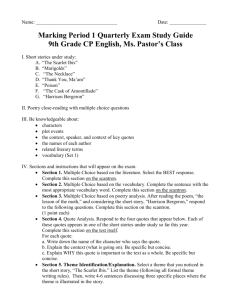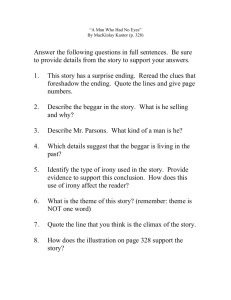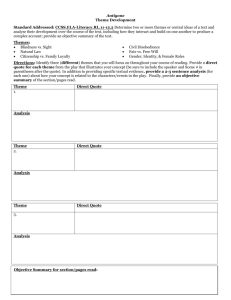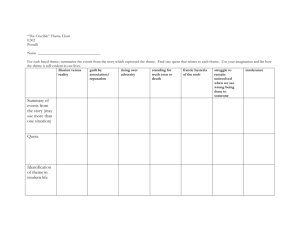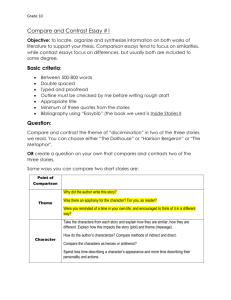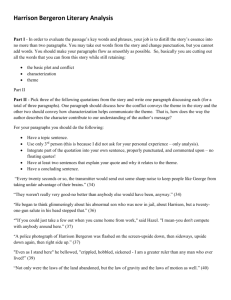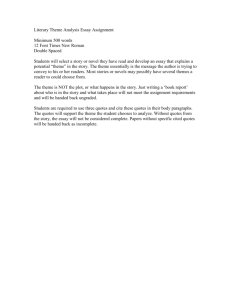Marking Period 1 Quarterly Exam Study Guide
advertisement
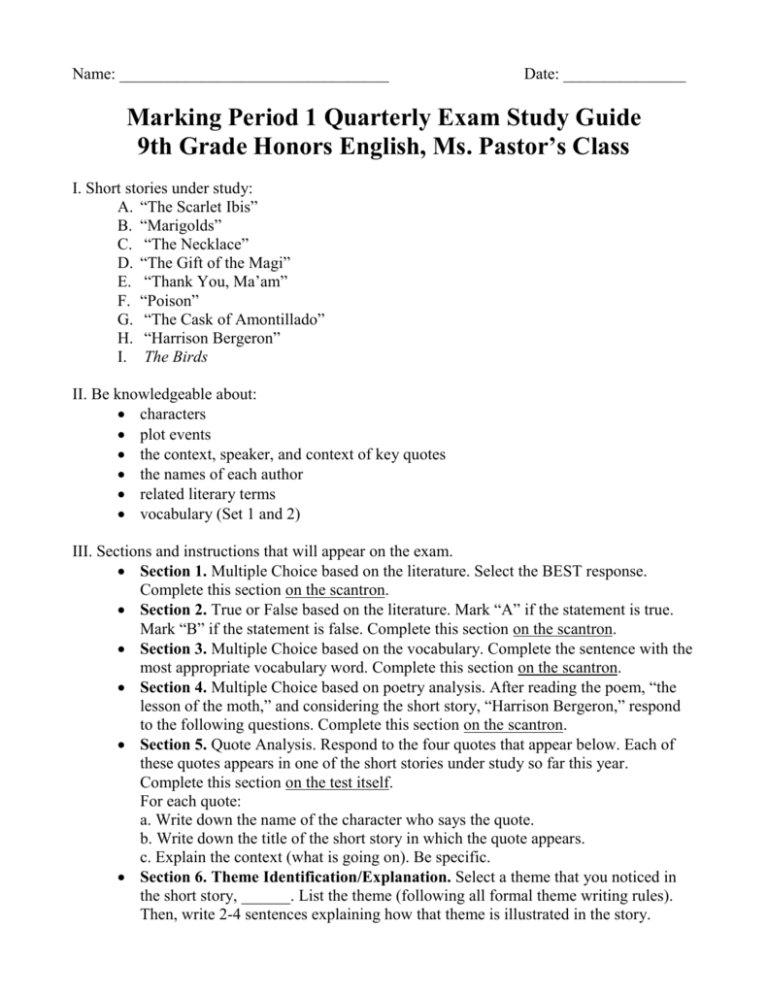
Name: _________________________________ Date: _______________ Marking Period 1 Quarterly Exam Study Guide 9th Grade Honors English, Ms. Pastor’s Class I. Short stories under study: A. “The Scarlet Ibis” B. “Marigolds” C. “The Necklace” D. “The Gift of the Magi” E. “Thank You, Ma’am” F. “Poison” G. “The Cask of Amontillado” H. “Harrison Bergeron” I. The Birds II. Be knowledgeable about: characters plot events the context, speaker, and context of key quotes the names of each author related literary terms vocabulary (Set 1 and 2) III. Sections and instructions that will appear on the exam. Section 1. Multiple Choice based on the literature. Select the BEST response. Complete this section on the scantron. Section 2. True or False based on the literature. Mark “A” if the statement is true. Mark “B” if the statement is false. Complete this section on the scantron. Section 3. Multiple Choice based on the vocabulary. Complete the sentence with the most appropriate vocabulary word. Complete this section on the scantron. Section 4. Multiple Choice based on poetry analysis. After reading the poem, “the lesson of the moth,” and considering the short story, “Harrison Bergeron,” respond to the following questions. Complete this section on the scantron. Section 5. Quote Analysis. Respond to the four quotes that appear below. Each of these quotes appears in one of the short stories under study so far this year. Complete this section on the test itself. For each quote: a. Write down the name of the character who says the quote. b. Write down the title of the short story in which the quote appears. c. Explain the context (what is going on). Be specific. Section 6. Theme Identification/Explanation. Select a theme that you noticed in the short story, ______. List the theme (following all formal theme writing rules). Then, write 2-4 sentences explaining how that theme is illustrated in the story. IV. Know the definitions of and be able to apply the following literary terms to the texts covered in this unit: 1. Plot 2. Setting 3. Six Categories of Conflict A. Person v. Person (Internal Conflict) B. Person v. Society (External Conflict) C. Person v. Nature (External Conflict) D. Person v. Technology/Machine (External Conflict) E. Person v. Supernatural (External Conflict) F. Person v. Himself/Herself (External Conflict) 4. Theme 5. Symbol 6. Foreshadowing 7. Hubris 8. Satire 9. Utopia 10. Dystopia 11. Protagonist 12. Antagonist 13. Paradox 14. Pathetic Fallacy 15. Characteristics of Literature in the Horror/Gothic genre 16. Hyperbole 17. Epiphany 18. Grotesque 19. Isolation 20. Novella 21. Hysteria 22. Foil 23. 3 Types of Irony A. Situational Irony B. Dramatic Irony C. Verbal Irony 24. Point of View: perspective A. First Person B. Second Person C. Third Person 25. Freytag’s Pyramid A. Exposition B. Inciting Incident C. Rising Action D. Climax E. Falling Action F. Resolution G. Denouement
